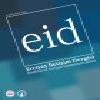Dijitalleşen Sinema Kameraları Ekseninde Akademi Ödülleri: Yarışma Filmleri Seçimine Dair Bir Değerlendirme
Sinemanın dijital devrimi, yapım sonrası süreciyle başlamış ve günümüzde film üretimi ve dağıtımının tüm dinamiklerini değiştirmiş ve yeni bir disiplin getirmiştir. Filmlerin kendilerini tanıtabilecekleri ve ön plana çıkarabilecekleri bir alan olan festivaller, ödüller ve yarışmalar da geçmişten günümüze seçkilerin oluşturulması, filmlerin değerlendirilmesi ve ödüllendirme gibi konular da dijitalleşen sinemadan doğrudan etkilenen organizasyonlardır. Bu araştırma, geçmişten günümüze daha çok ana akım Amerikan sinemasının kendi içinde ürettiği filmlerin yarıştığı Akademi Ödülleri’nin dijital devrim ile birlikte yarışma filmleri aday tercihlerini ve farklı coğrafyalarla olan ilişkisini dijitalleşen sinema kameraları ekseninde sorgulamayı amaçlamaktadır. Açıklayıcı bir alan araştırması olan bu çalışma, sistematik desenli gömülü teori yöntemini kullanmaktadır. Sınırlılık Akademi Ödülleri’nde 2006-2023 arası dönem olarak belirlenmiştir. Sonuç olarak 2010 sonrası Akademi Ödülleri’nde “En İyi Film” ödülü olmak üzere birçok kategoride Amerikan ana akım sineması üretimi olmayan, daha düşük bütçeli bağımsız filmlerin de yarıştığı ve ödül aldığı, dijital platformlar için üretilmiş filmlerin de yarışabildiği bir yapısal dönüşümün yaşandığı ortaya çıkmaktadır.
Anahtar Kelimeler:
Akademi Ödülleri, Dijital Sinema, Sinema Kameraları
Academy Awards on the Axis of Digitalizated Cinema Cameras: An Evaluation of the Competition Movies Selection
The digital revolution of cinema started with the post-production process and has changed all the dynamics of film production and distribution today and brought a new discipline. Festivals, awards and competitions, which are an area where films can introduce and highlight themselves, are also organizations that are directly affected by digitalized cinema, such as the creation of selections from the past to the present, the evaluation and rewarding of films. This research aims to question the nomination preferences of the Academy Awards, where mostly the films produced by the mainstream American cinema from past to present, compete with the digital revolution, the preferences of the candidates fort he competition films and different geographies on the axis of digitalized cinema cameras. This descriptive field study uses the embedded theory method with a systematic pattern. Limitation is determined as the period between 2006-2023 at the Academy Awards. As a result, after 2010, it is revealed that a structural transformation has been experienced in which non-American mainstream cinema production, low-budget independent films competed and won awards in many categories, including the “Best Picture” award at the Academy Awards, and films produced for digital platforms could compete.
Keywords:
Academy Awards, Digital Cinema, Cinema Cameras,
___
- 95th Oscars Complete Rules. (n.d.). Retrieved March 20, 2023, from https://www.oscars.org/sites/oscars/files/95th_oscars_complete_rules.pdf
- Çelik, H., & Ekşi, H. (2015). Nitel Desenler: Gömülü Teori (Qualitative Patterns: Grounded Theory). Edam.
- Demont-Heinrich, C. (2022). When the exception to the rule proves the rule: Parasite’s paradoxical Academy Awards best picture win and American Cultural Insularity in the Center (ACIC). Journal of Communication Inquiry, 0(0), 1–19. https://doi.org/10.1177/01968599221120087
- Elsaesser, T., & Hagener, M. (2015). Film Theory: An Introduction Through The Senses. Routledge.
- Erkılıç, H. (2006). Elektronik / Dijital Sinema: Değişen Üretim Tarzında Olanaklar ve Sınırlılıklar (Electronic / Digital Cinema: Opportunities and Restrictions in The Mode of Cinematic Production). New Media and Interactivity International Conference, 62–68.
- Erkılıç, H. (2022). Lev Manoviç ve Dijital Sinema Teorisi (Lev Manovich and Digital Cinema Theory). In Sinemanın Teorisi (Theory of Cinema) (pp. 398–420). Yordam.
- Fener, S. (2012). HD Sinematografi (HD Cinematography). Bebek Tanıtım.
- IMDb: Ratings, Reviews, and Where to Watch the Best Movies & TV Shows. (n.d.). IMDb. Retrieved March 20, 2023, from https://www.imdb.com/
- Kenneally, C. (Director). (2012). Side By Side [Documentary]. USA: Company Films.
- Meşe, S. (2015). Oscar Ödülü Verilen Filmlerin Dil Özellikleri (The OSCAR Award The Movies Language Features) [(Unpublished Master Thesis)]. Beykent University Institute of Social Sciences.
- Seçmen, E. A. (2020). Dijitalin Sineması (Cinema of Digital). Doruk.
- Şentürk, R. (2016). Sinemanın Dramı (Drama of Cinema). In Dijital Sinema: Kuramdan Tekniğe (Digital Cinema: From Theory to Technique) (pp. 7–50). İnsanArt.
- Stevens, K. (2012). Moving With The Times: D-Cinema and DCP Festivals. Studies in Australasian Cinema, 6(3), 279–288.
- Swartz, C. (2005). Understanding Digital Cinema: A Proffesional Handbook. Elsevier Focal Press.
- Üçkardeş, M. (2013). Sinemada Oscar Ödülleri ve Oscar Ödülü Almış Kostüm Tasarımcıları (Oscar Awards In Cinema and Costume Designers Who Were Awarded With Oscar Awards) [(Unpublished Master Thesis)]. Haliç University Institute of Social Sciences.
- Wheeler, P. (2005). Practical Cinematography. Routledge.
- Yurdigül, Y., İspir, N., & Yurdigül, A. (2015). Ötekinin İnşa Edildiği Sorunlu Bir Alan Olarak Oscar Ödül Törenleri: 85. Akademi Ödülleri ve Argo Filmi Örneği (Other Being Built, As A Problem Area: Oscar Award Ceremonies). Atatürk İletişim Dergisi (Communicata), 9, 1–12.
- Zengin, F. (2016). Dijital Sinemanın Doğuşu ve Gelişimi (The Birth and Development of Digital Cinema). In Dijital Sinema: Kuramdan Tekniğe (Digital Cinema: From Theory to Technique) (pp. 185–215). İnsanArt.
- ISSN: 1308-3198
- Yayın Aralığı: Yılda 2 Sayı
- Başlangıç: 2009
- Yayıncı: Erciyes Üniversitesi İletişim Fakültesi
Sayıdaki Diğer Makaleler
YouTube’da Haberciliğin Maddi Koşulları ve Platformun Çizdiği Sınırların İncelenmesi
Star Stratejisi Kullanımları ve Popüler Kültür: ‘Kıpır Kıpır Bi Coca-Cola’ Reklamı
Çok Uluslu Marka Reklamlarının Küyerelleşme Bağlamında Göstergebilimsel Analizi
Sürükleyici Gazetecilik: Değişen Roller, Değerler ve Normlar
Türkiye’de Bilim İnsanlarının Kamusal İletişim Etkinlikleri ve Buna Etki Eden Faktörlerin Analizi
Türkiye’deki Ulusal Kanallarda Yayınlanan Dizilerde Suçun ve Suçlu Profilinin Analizi
Aytekin İŞMAN, Mehpare YAĞLICI
İndirim Kampanyalarının Tüketicilerin Fiyat Algısı Üzerindeki Etkisi: Black Friday Örneği
Kullanıcı Deneyimli Haber İçerikleri Bağlamında Etkileşimli İnfografik Haberler
